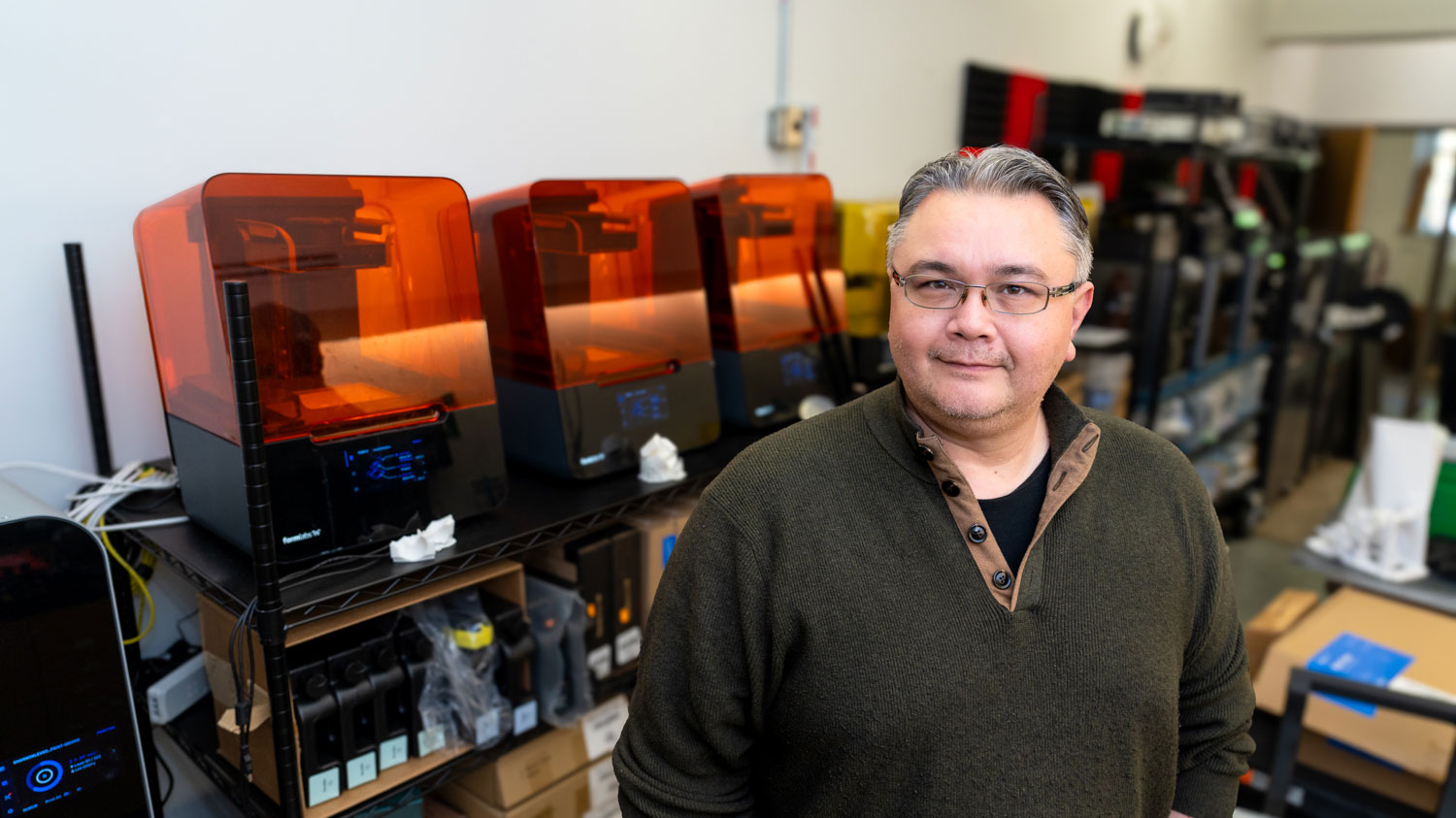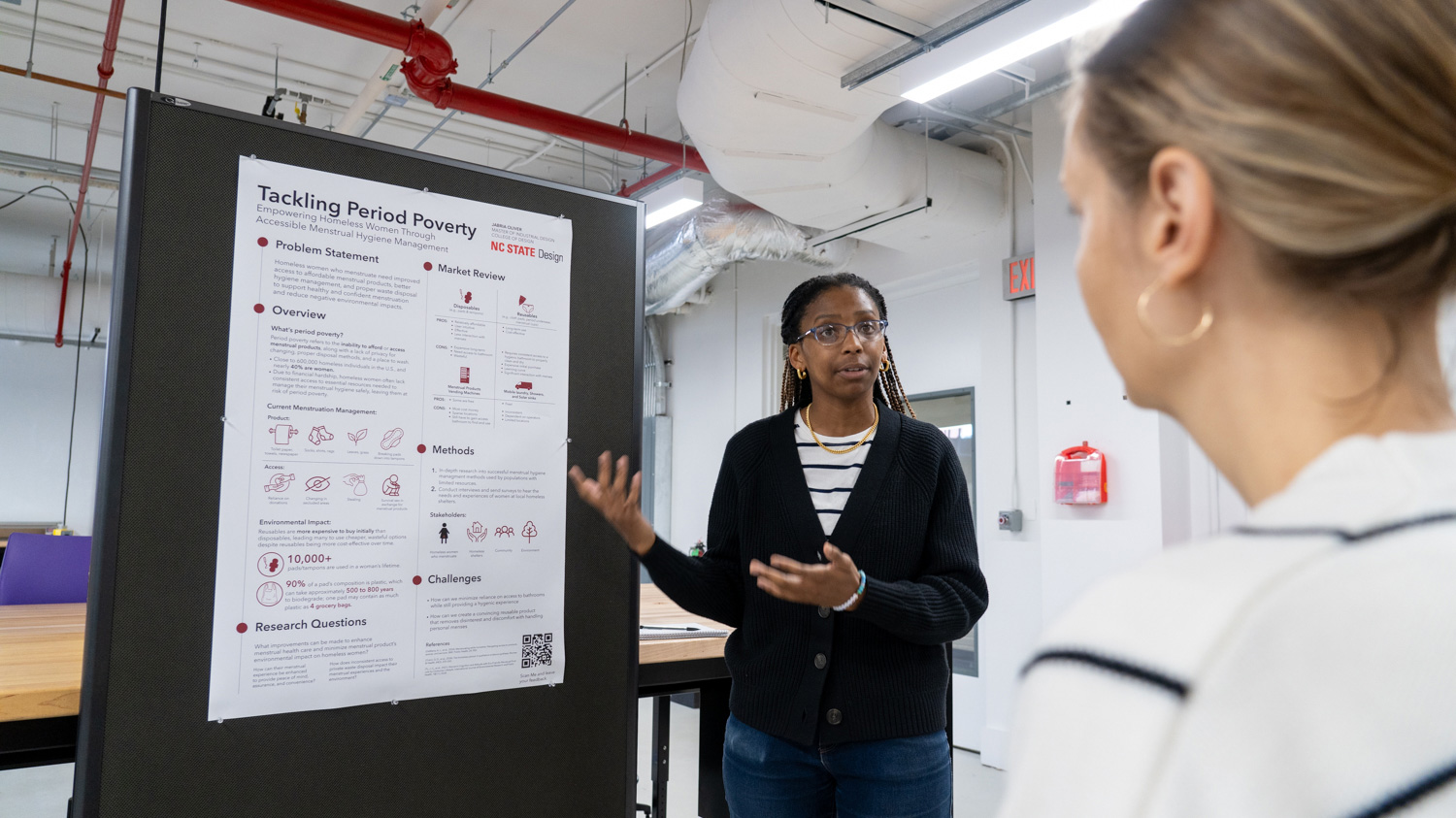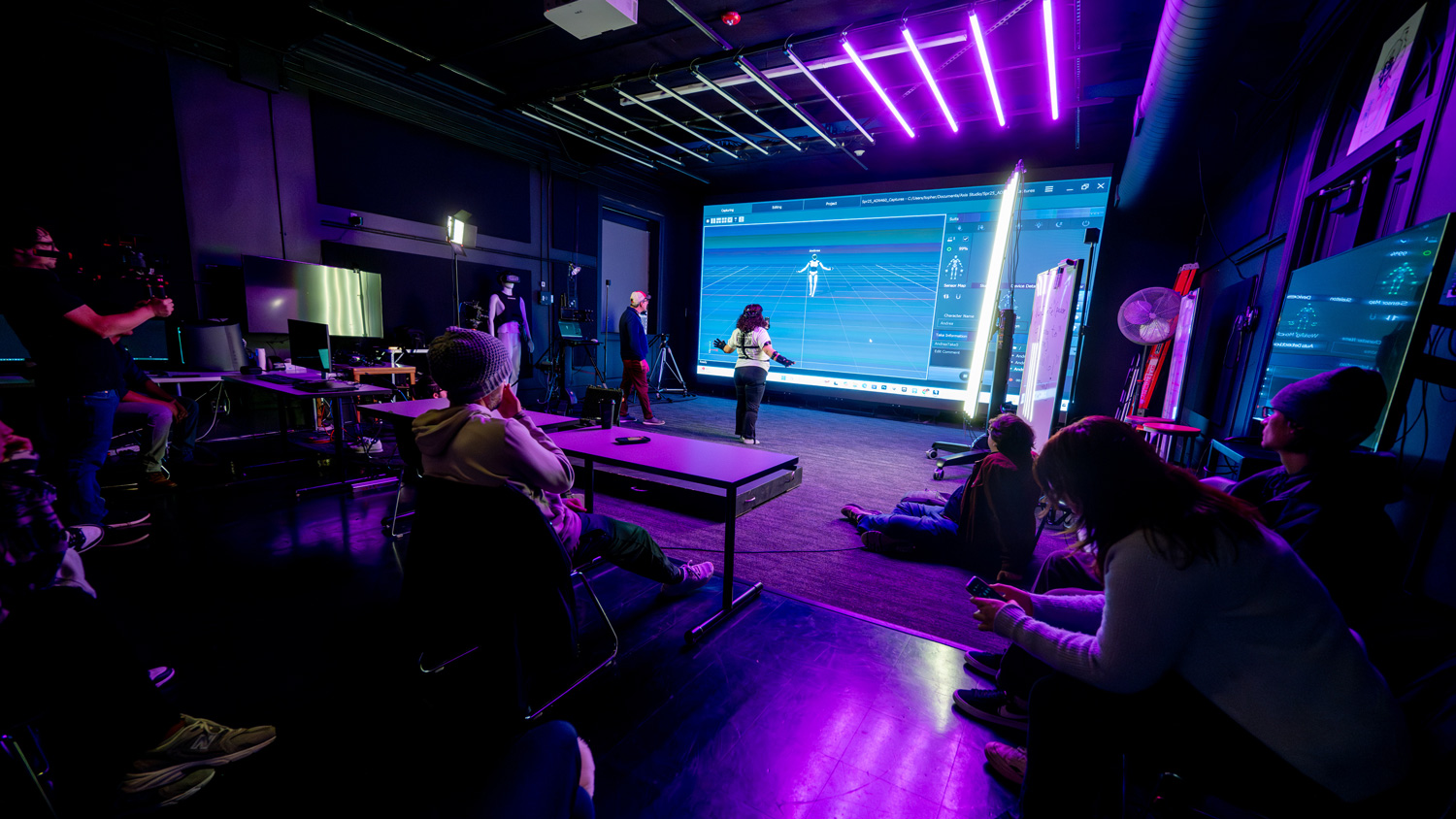Breaking the Stereotype: Using AI to Support Diversity in STEM
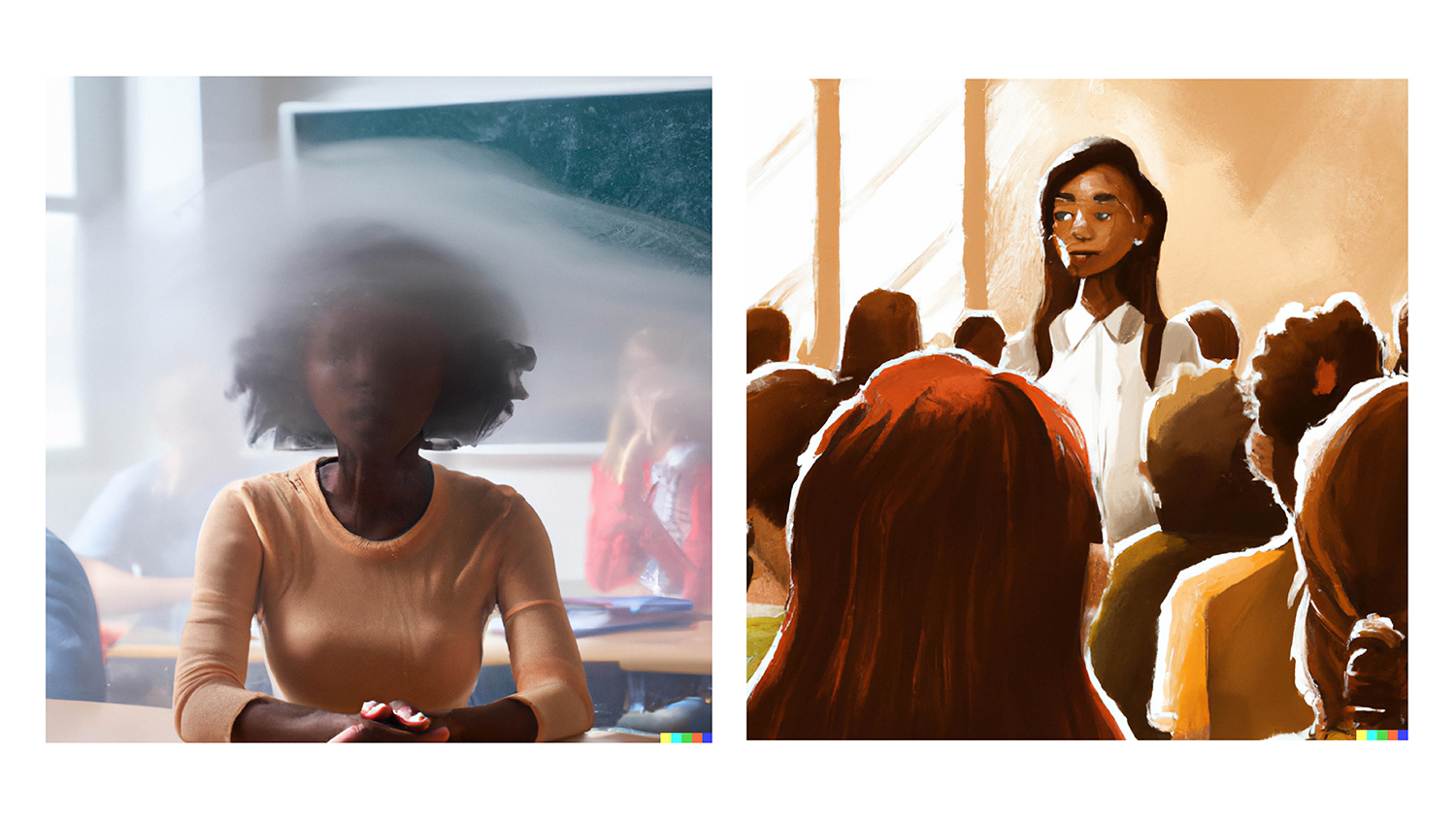
When Ashley Anderson began her research as a graduate student in the Department of Graphic & Experience Design in 2020, she was fascinated by the concept of art-based therapies.
She wondered how the design process could fit into mental wellness practices, especially for people who aren’t experienced with artistic techniques.
“When I was conducting my initial research into art-based therapies, I kept seeing a lot of prompts that asked participants to draw a picture of how they’re feeling, but there weren’t many guidelines to help them through the process,” recalls Anderson. “And so that’s how I came up with the idea for my master’s thesis – a mobile app that helps you enact scenes of mental imagery.”
Since completing her master’s degree, Anderson has chosen to pursue a Ph.D. at the College of Design to continue her research.
Once focused on designing for clinical intervention, her research now looks at why there aren’t as many Black students earning degrees in science, technology, engineering and math (STEM) fields, even though these fields are showing significant growth overall. Some researchers think it’s because of a phenomenon known as stereotype threat– or the threat of being judged based on stereotypes.
The STEM Disparity

According to recent data from the National Center for Science and Engineering Statistics, Black students are consistently underrepresented in science and engineering fields, especially when it comes to earning bachelor’s degrees.
In 2020, Black students earned only 5% of bachelor’s degrees in engineering, starkly contrasting the 12% of degrees earned in social and behavioral sciences. While the number of engineering degrees earned by Black students increased between 2011 and 2020, the share of degrees relative to the broader student population has remained largely unchanged.
This stagnation may be attributed to a variety of factors, including explicit racism within engineering programs, stereotype threat, and a lack of diversity-related support.
In Anderson’s study, students would be asked to attend a workshop where they think about how they fit into their STEM fields and use technology to create pictures that represent their experiences. Then, throughout the semester, they’ll keep working with these pictures and do some reflective exercises to see if it helps them feel more connected and comfortable in this space.
Ultimately, Anderson wants to find a way to support these students early in their academic journey and reduce the impact of stereotype threats.
Breaking Stereotype Threat Barriers
Stereotype threat has consistently been identified as a significant barrier to academic success for Black students in engineering. Research suggests that Black students are particularly vulnerable to stereotype threats during their first year of college, especially at predominantly white institutions (PWIs) where diversity and inclusiveness levels may be lower.
Anderson’s proposed social-belonging intervention, known as mediated rescripting, seeks to address this issue by blending elements of cognitive-behavioral therapy (CBT), social psychology, and generative AI technology. By engaging in imagery rescripting, students can explore and reframe mental imagery associated with concerns about belonging in their STEM majors to lessen the impact of stereotype threats.
One of the key aspects of Anderson’s research is her use of artificial intelligence (AI) and text-to-image generators to facilitate imagery rescripting. In the past, a lack of well-defined strategies and limited access to picture-making tools posed challenges to implementing this technique effectively. However, AI technology has provided a novel approach.
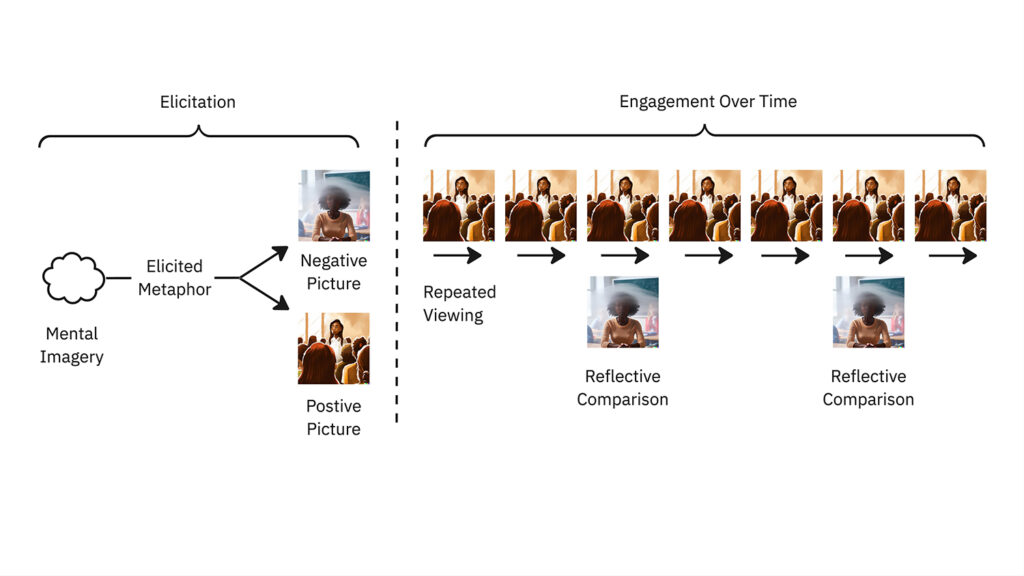
“A person might be dealing with painful mental imagery or negative thoughts, but by using AI, they’re able to get that image out of their heads as a visual representation,” says Anderson. “It almost becomes like a playground for the way you think about yourself, or the way you think about the world.”
Text-to-image generators enable rapid prototyping of visuals without requiring users to be expert artists. This innovative use of AI technology holds significant potential in expanding interventions for addressing stereotype threats.
Designing a Better Future
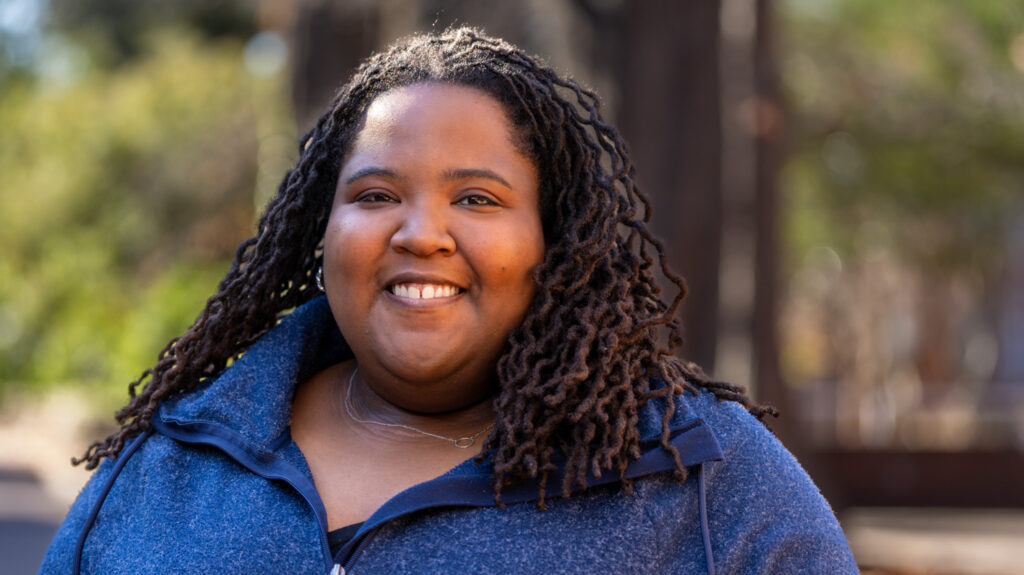
Designers like Anderson are uniquely positioned to take on the challenge of exploring new application spaces for AI technology. While data scientists focus on model accuracy, designers prioritize user-oriented behavior in their approach. This method aligns perfectly with Anderson’s vision for a more inclusive and equitable STEM education landscape.
Her research, grounded in the literature on imagery change within CBT and belonging in STEM offers a promising solution to a persistent problem. By engaging students in elicited metaphors and AI-generated picture making processes, Anderson hopes to break down barriers and foster success for Black students in STEM.
Anderson is currently in the participant recruitment phase and plans to begin data collection during the Spring 2024 semester. If you are interested in learning more about her research, reach out directly at alander7@ncsu.edu.
- Categories:
